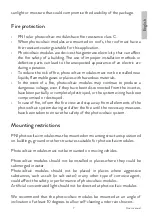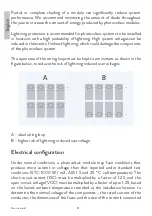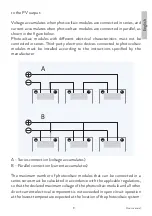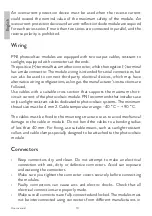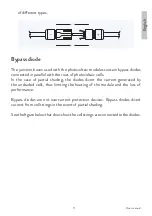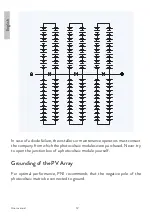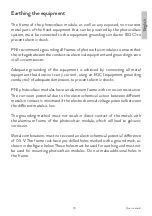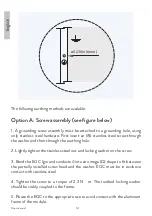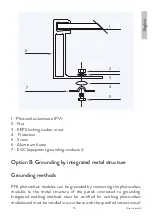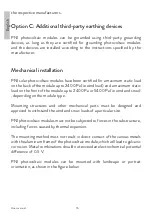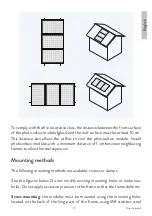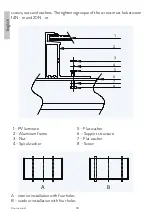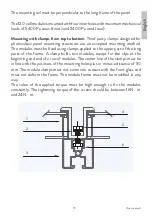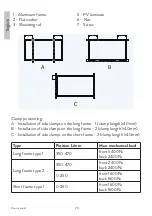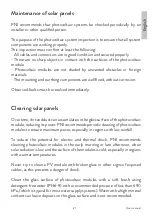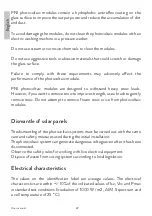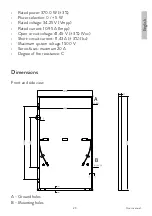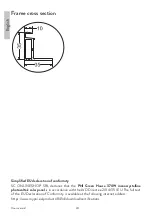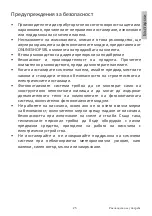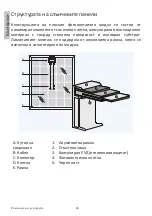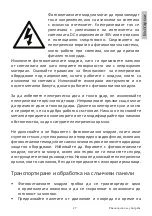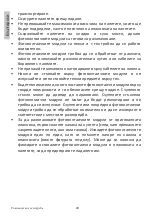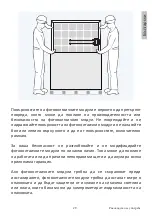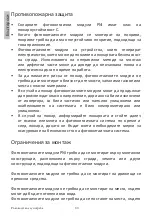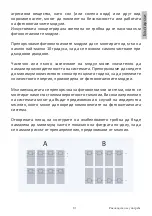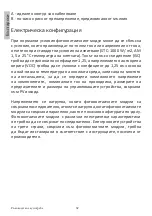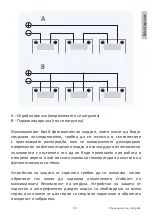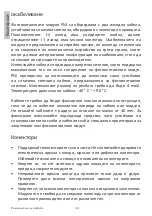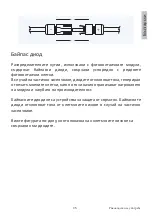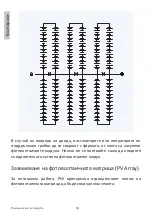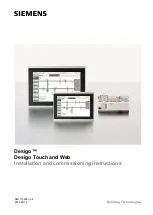
21
User manual
En
gli
sh
Maintenance of solar panels
PNI recommends that photovoltaic systems be checked periodically by an
installer or other qualified person.
The purpose of the photovoltaic system inspection is to ensure that all system
components are working properly.
This inspection must confirm at least the following:
- All cables and connectors are in good condition and secured properly
- There are no sharp objects in contact with the surfaces of the photovoltaic
module
- Photovoltaic modules are not shaded by unwanted obstacles or foreign
materials
- The mounting and earthing components are well fixed, without corrosion.
Observed faults must be resolved immediately.
Cleaning solar panels
Over time, dirt and dust can accumulate on the glass surface of the photovoltaic
module, reducing its power. PNI recommends periodic cleaning of photovoltaic
modules to ensure maximum power, especially in regions with low rainfall.
To reduce the potential for electric and thermal shock, PNI recommends
cleaning photovoltaic modules in the early morning or late afternoon, when
solar radiation is low and the surface of the modules is cold, especially in regions
with warmer temperatures.
Never try to clean a PV module with broken glass or other signs of exposed
cables, as this presents a danger of shock.
Clean the glass surface of photovoltaic modules with a soft brush using
detergent-free water (PH6-9) with a recommended pressure of less than 690
kPa, (which is typical for most water supply systems). Water with a high mineral
content can leave deposits on the glass surface and is not recommended.
Summary of Contents for Green House 370W
Page 25: ...25 ONLINESHOP SRL...
Page 26: ...26 A B C D E 1 2 3 5 4 A B C D E 1 2 3 EVA 4 5...
Page 27: ...27 DC 30V...
Page 28: ...28...
Page 29: ...29...
Page 30: ...30 PNI C PNI...
Page 31: ...31 10 A B...
Page 32: ...32 A B STC 1000 W m2 AM 1 5 25 C ISC 1 25 VOC 1 25 PV...
Page 33: ...33 A B A B...
Page 34: ...34 PNI PNI 4 mm2 40 C 90 C 40 mm...
Page 35: ...35...
Page 36: ...36 PV Array PNI...
Page 37: ...37 EGC PNI EGC PNI 0 5V...
Page 38: ...38 0 236in 6mm A 1 M5 2 3 EGC EGC 4 2 3 N m...
Page 39: ...39 5 EGC 1 2 6 3 4 5 7 1 PV 2 3 KEPS 4 5 6 7 EGC...
Page 40: ...40 B PNI C PNI PNI 2400 Pa 2400 Pa 5400 Pa PNI...
Page 41: ...41 0 5 V PNI 10 cm...
Page 42: ...42 1 M8 14N m 20N m 1 2 3 4 5 6 7 8...
Page 43: ...43 1 PV 2 3 4 5 6 7 8 A B B 120 5400 Pa 2400 Pa 50 mm 16N m 24N m...
Page 44: ...44 6 5 2 4 3 1 1 2 3 5 PV 6 7 L L L L L A B C A 1...
Page 46: ...46 PNI PNI PV PH6 9 690 kPa PNI...
Page 48: ...48 A B A B Sectiune transversala a cadrului...
Page 231: ......
Page 232: ......

